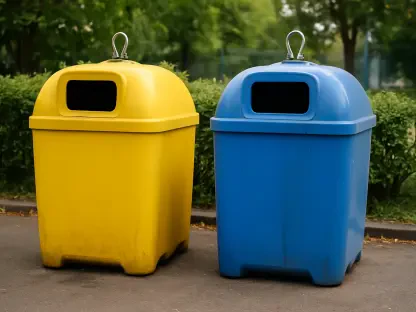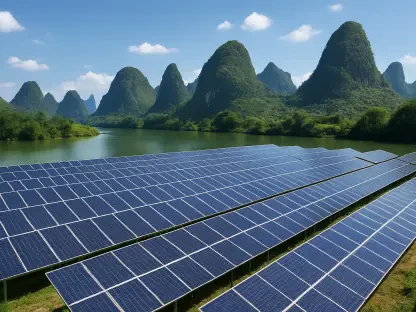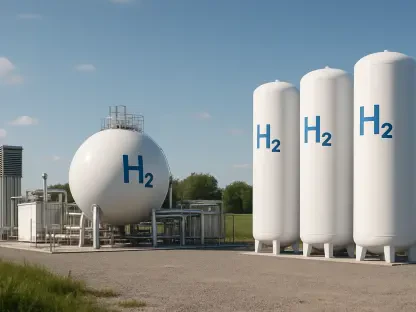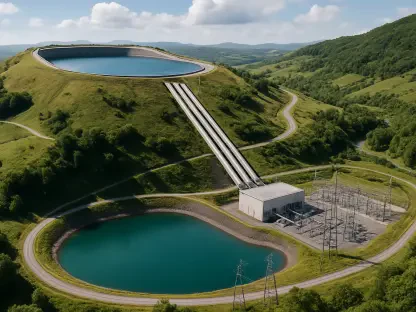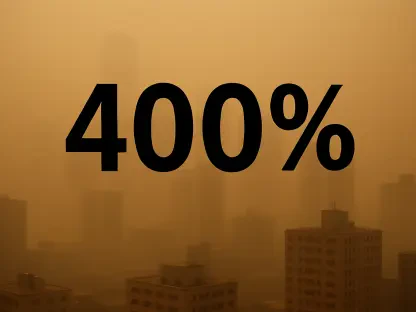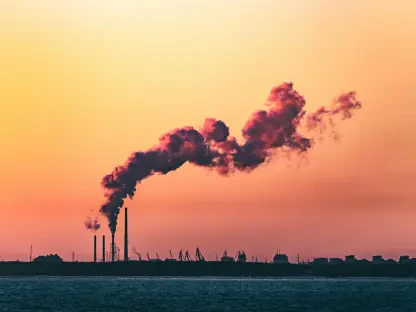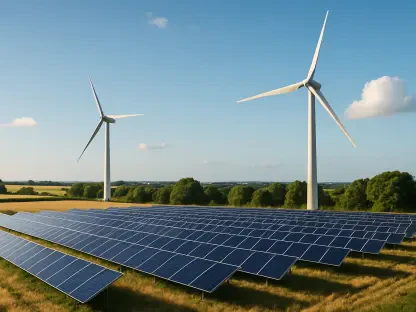Cuba is grappling with a severe energy crisis, primarily driven by a confluence of aging infrastructure and stringent U.S. sanctions. This crisis reached a tipping point when the National Electric System (SEN) collapsed in October 2024 following the shutdown of the Antonio Guiteras thermoelectric plant. The collapse unfurled widespread power outages and highlighted enduring vulnerabilities within the nation’s energy system. The issue of energy sustainability has since moved to the forefront of national concerns, bringing to light the urgent need for modernization efforts and a comprehensive re-evaluation of Cuba’s long-term energy strategy.
The Collapse of the Power Grid
In October 2024, Cuba suffered its most significant power outage in two years when the Antonio Guiteras thermoelectric plant unexpectedly shut down. The 330-MW plant is among the island’s largest thermal power facilities, and its failure led to a complete disconnection of the National Electric System. This sudden outage left the entire nation in the dark, exposing the frail state of its aging infrastructure. The incident underscored the broader issues plaguing Cuba’s power grid, particularly the reliance on outdated and overextended thermal plants. Many of these plants have exceeded their intended operational lifespan and face frequent breakdowns.
The collapse of the power grid highlighted the urgent need for robust maintenance and modernization strategies to prevent future occurrences. The aging infrastructure not only complicates operational efficiency but also poses significant safety risks. This event has catalyzed discussions among policymakers and energy experts regarding the desperate need for systemic upgrades. In a country already struggling with economic constraints, the challenge of revitalizing the power grid appears daunting. However, the severity of the situation has made it clear that immediate action is required to avoid similar disruptions in the future.
Impact of U.S. Sanctions
U.S. sanctions have significantly hampered Cuba’s ability to upgrade its energy infrastructure. These sanctions restrict access to modern technologies and critical supplies needed to maintain and improve the power grid. As a result, Cuba has struggled to keep its aging thermal plants operational without the necessary tools and parts. The impact of these sanctions extends beyond just the energy sector, stunting overall national development and economic growth. Sanctions create an environment of uncertainty, further complicating efforts to secure foreign investment and financial aid crucial for infrastructure projects.
The sanctions have also created economic constraints, limiting Cuba’s capacity to invest in upgrades or alternative energy sources. This has left the nation heavily dependent on antiquated technology that cannot cope with current energy demands. The situation calls for a reassessment of international policies, as the existing sanctions continue to exacerbate the energy crisis. The restrictions have made it nearly impossible for Cuba to acquire state-of-the-art equipment or establish collaborations that could help mitigate the dire circumstances. In essence, the sanctions have transformed a challenging situation into a near-impossible one.
Natural Disasters Amplifying the Crisis
Hurricane Oscar further complicated Cuba’s energy woes by causing extensive damage to infrastructure across four municipalities in Guantánamo province. The hurricane resulted in seven fatalities and substantial structural damage, adding another layer of difficulty to the already strained energy system. The natural disaster diverted resources and attention from ongoing recovery efforts, highlighting the vulnerability of Cuba’s energy infrastructure to environmental events. The aftermath of the hurricane has shown how natural disasters can exacerbate existing problems, making it even harder to recover and stabilize.
The impacts of such natural disasters extend beyond immediate damage, disrupting long-term recovery plans and hindering efforts to stabilize the power supply. These events underscore the need for resilient infrastructure capable of withstanding environmental challenges while ensuring uninterrupted energy provision. Natural disasters like hurricanes are unpredictable, but their effects can be mitigated through better preparation and more robust infrastructure. This has led to calls for revising building codes and investing in hurricane-resistant technologies to protect the existing grid from future environmental setbacks.
Challenges in Fuel Supply
Fuel supply disruptions have added another dimension to Cuba’s energy crisis. The country’s power plants primarily rely on high-sulfur Cuban crude oil, which accelerates the wear and tear of aging machinery. Frequent fuel shortages have made it challenging to keep the plants running consistently, leading to recurrent power outages. The dependency on local crude not only strains the power plants but also limits flexibility in responding to fuel supply interruptions. Efforts to diversify fuel sources or improve oil quality are stymied by economic and logistical constraints, perpetuating a cycle of maintenance issues and energy shortages.
With the country’s reliance on high-sulfur crude, the already fragile energy infrastructure faces additional stress. The corrosive properties of this type of oil accelerate the degradation of machinery, necessitating frequent and often costly repairs. These operational challenges are compounded by logistical hurdles in securing a stable supply of higher-quality fuel. Short-term solutions, such as importing fuel from sympathetic nations, are often prohibitively expensive and logistically complex. Thus, Cuba finds itself in a conundrum where neither continuing with local crude nor importing foreign oil offers a feasible long-term solution.
Restoration and Recovery Efforts
In response to the power grid collapse, Cuba rapidly initiated recovery efforts. These efforts included establishing microsystems in various provinces to stabilize power supply and gradually reconnect major thermal power plants. Operational units like the Energas plant in Santa Cruz del Norte and the Renté power plant in the east were among the first to be brought back online. Despite these efforts, significant challenges remain. While some thermal plants have been reconnected, others are still undergoing maintenance or are offline, causing persistent service disruptions.
The recovery plan aimed to restore 489 MW of power by the end of 2023, yet the system continues to struggle with maintaining sufficient reserve capacity. The establishment of microsystems has been a partial success, providing temporary relief in some areas while falling short in others. This fragmented approach underscores the complexities involved in a nationwide restoration effort. Furthermore, ongoing maintenance efforts are often hindered by the same issues that caused the initial collapse, such as outdated equipment and a lack of essential resources. Despite these hurdles, the Cuban government remains committed to stabilizing the grid as quickly as possible.
The Path Forward: Modernization and Alternatives
To overcome its energy crisis, Cuba must pursue a multifaceted strategy incorporating modernization of existing infrastructure and exploration of alternative energy sources. Upgrading outdated power plants with modern technology is crucial to ensure reliability and efficiency. This effort requires international cooperation and easing of sanctions to access necessary resources. Exploring renewable energy sources, such as solar and wind, could offer a sustainable solution to the energy deficit. Investments in renewable energy would reduce dependency on high-sulfur crude and enhance resilience against both economic sanctions and natural disasters.
Implementing these strategies will be essential for Cuba’s long-term energy stability. Renewable energy projects could provide a dual benefit of reducing environmental impact while bolstering energy security. International partnerships in renewable energy could also open new avenues for technological exchange and economic cooperation. However, these initiatives will require a significant shift in both policy and mindset, focusing on long-term investments rather than quick fixes. The path forward is fraught with challenges, but the rewards of a modernized, resilient energy grid make it an endeavor worth pursuing.
Conclusion: A Struggle for Stability
Cuba is currently facing a dire energy crisis, largely due to outdated infrastructure and strict U.S. sanctions. The situation dramatically worsened in October 2024 when the National Electric System (SEN) collapsed after the Antonio Guiteras thermoelectric plant was shut down. This failure led to widespread power outages across the country, shedding light on the long-standing weaknesses within Cuba’s energy system. In the wake of this collapse, energy sustainability has become a pressing national concern. The crisis has underscored the critical need for modernization and a thorough reassessment of Cuba’s long-term energy strategies. As Cuba grapples with these challenges, there is an urgent call for innovation and investment in renewable energy sources, improved efficiency, and greater resilience in the energy infrastructure. The situation has also sparked national debate on the potential benefits of diversifying energy sources, including solar and wind power, to reduce dependence on aging thermoelectric plants. This crisis might be the catalyst for a more sustainable and self-reliant energy future for Cuba.


